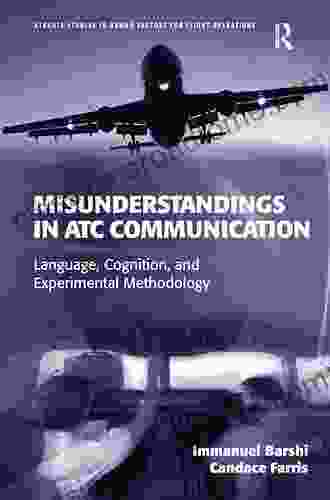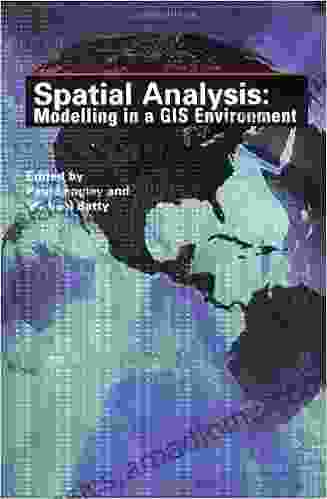Unlocking the Power of Spatial Analysis in GIS: A Comprehensive Guide

Spatial analysis is a powerful tool for understanding the relationships between geographic features and human activities. It allows us to explore data, identify patterns, and make informed decisions about the world around us. With the advent of geographic information systems (GIS),spatial analysis has become more accessible and sophisticated than ever before.
4.6 out of 5
| Language | : | English |
| File size | : | 9773 KB |
| Text-to-Speech | : | Enabled |
| Screen Reader | : | Supported |
| Print length | : | 400 pages |
| Lending | : | Enabled |
This comprehensive guide will provide you with a thorough understanding of spatial analysis in GIS. We will cover the basics of spatial data and GIS software, as well as advanced techniques for data exploration, modeling, and decision-making. By the end of this guide, you will be equipped to harness the full potential of GIS for spatial analysis.
What is Spatial Analysis?
Spatial analysis is the process of analyzing data that has a geographic component. This data can be anything from the location of businesses to the elevation of a landscape. Spatial analysis allows us to identify patterns and relationships in the data that would not be possible to see otherwise.
There are many different types of spatial analysis, including:
* Descriptive analysis: This type of analysis simply describes the spatial distribution of data. For example, you could create a map of the population density in a city. * Exploratory analysis: This type of analysis is used to identify patterns and trends in data. For example, you could use spatial analysis to find out which areas of a city have the highest crime rates. * Inferential analysis: This type of analysis is used to make predictions about the future based on past data. For example, you could use spatial analysis to predict which areas of a city are most likely to experience flooding.
GIS Software for Spatial Analysis
There are many different GIS software packages available, each with its own strengths and weaknesses. Some of the most popular GIS software packages include:
* ArcGIS Pro: This is a powerful GIS software package that is used by professionals in a wide range of industries. * QGIS: This is a free and open-source GIS software package that is becoming increasingly popular. * MapInfo Pro: This is a GIS software package that is known for its ease of use.
The choice of which GIS software package to use depends on your specific needs and budget.
Data Preparation for Spatial Analysis
Before you can perform spatial analysis, you need to prepare your data. This involves cleaning the data, removing errors, and converting the data into a format that is compatible with your GIS software.
The following are some tips for preparing data for spatial analysis:
* Make sure that your data is in a digital format. * Clean the data by removing any errors or inconsistencies. * Convert the data into a format that is compatible with your GIS software. * Create a metadata file that describes the data.
Exploratory Spatial Data Analysis
Exploratory spatial data analysis (ESDA) is a type of spatial analysis that is used to identify patterns and trends in data. ESDA can be used to identify outliers, clusters, and hot spots.
There are many different ESDA techniques, including:
* Moran's I: This statistic is used to measure spatial autocorrelation. * Getis-Ord G*: This statistic is used to identify hot spots and cold spots. * Local Indicators of Spatial Association (LISA): This statistic is used to identify outliers and clusters.
ESDA can be a powerful tool for understanding the spatial distribution of data.
Spatial Modeling
Spatial modeling is the process of creating a model that represents a real-world phenomenon. Spatial models can be used to predict the future, simulate different scenarios, and make decisions.
There are many different types of spatial models, including:
* Regression models: These models are used to predict the value of a dependent variable based on the values of one or more independent variables. * Classification models: These models are used to classify data into different categories. * Clustering models: These models are used to identify clusters of similar data points.
Spatial models can be a powerful tool for understanding and predicting the future.
Decision-Making with Spatial Analysis
Spatial analysis can be used to support decision-making in a wide range of applications, including:
* Land use planning: Spatial analysis can be used to identify the best locations for new development. * Transportation planning: Spatial analysis can be used to optimize transportation networks. * Environmental planning: Spatial analysis can be used to identify areas that are at risk for environmental degradation.
Spatial analysis can be a valuable tool for making informed decisions about the world around us.
Spatial analysis is a powerful tool for understanding the relationships between geographic features and human activities. It allows us to explore data, identify patterns, and make informed decisions about the world around us. With the advent of GIS, spatial analysis has become more accessible and sophisticated than ever before.
This comprehensive guide has provided you with a thorough understanding of spatial analysis in GIS. We have covered the basics of spatial data and GIS software, as well as advanced techniques for data exploration, modeling, and decision-making. By the end of this guide, you will be equipped to harness the full potential of GIS for spatial analysis.
4.6 out of 5
| Language | : | English |
| File size | : | 9773 KB |
| Text-to-Speech | : | Enabled |
| Screen Reader | : | Supported |
| Print length | : | 400 pages |
| Lending | : | Enabled |
Do you want to contribute by writing guest posts on this blog?
Please contact us and send us a resume of previous articles that you have written.
 Book
Book Novel
Novel Page
Page Chapter
Chapter Text
Text Story
Story Genre
Genre Reader
Reader Library
Library Paperback
Paperback E-book
E-book Magazine
Magazine Newspaper
Newspaper Paragraph
Paragraph Sentence
Sentence Bookmark
Bookmark Shelf
Shelf Glossary
Glossary Bibliography
Bibliography Foreword
Foreword Preface
Preface Synopsis
Synopsis Annotation
Annotation Footnote
Footnote Manuscript
Manuscript Scroll
Scroll Codex
Codex Tome
Tome Bestseller
Bestseller Classics
Classics Library card
Library card Narrative
Narrative Biography
Biography Autobiography
Autobiography Memoir
Memoir Reference
Reference Encyclopedia
Encyclopedia Katharine C Giovanni
Katharine C Giovanni Miles Hacker
Miles Hacker Amit Arad
Amit Arad Anabella Atach
Anabella Atach Osman Hasan
Osman Hasan Wendy Smith
Wendy Smith Annette Giesecke
Annette Giesecke Hugh Newman
Hugh Newman Andrew C Thompson
Andrew C Thompson Angela Barbagallo
Angela Barbagallo Robert Michael Gates
Robert Michael Gates Andrew Knapp
Andrew Knapp Matt Zandstra
Matt Zandstra Andrea Dallan
Andrea Dallan Detrick Deburr
Detrick Deburr Ann Muller
Ann Muller Kenneth W Clarkson
Kenneth W Clarkson Frank Martela Ph D
Frank Martela Ph D Andy Leonard
Andy Leonard Jac J W Andrews
Jac J W Andrews
Light bulbAdvertise smarter! Our strategic ad space ensures maximum exposure. Reserve your spot today!

 Thomas MannHow the Catholic Church and the LGBT Community Can Enter into a Relationship...
Thomas MannHow the Catholic Church and the LGBT Community Can Enter into a Relationship...
 Robbie CarterThe Ultimate Resource for Atkins Claims: Unraveling the Mysteries of Filing...
Robbie CarterThe Ultimate Resource for Atkins Claims: Unraveling the Mysteries of Filing... Ryan FosterFollow ·3.5k
Ryan FosterFollow ·3.5k Jared PowellFollow ·5.2k
Jared PowellFollow ·5.2k Russell MitchellFollow ·18k
Russell MitchellFollow ·18k Ed CooperFollow ·4.9k
Ed CooperFollow ·4.9k Diego BlairFollow ·13.4k
Diego BlairFollow ·13.4k Ben HayesFollow ·12.9k
Ben HayesFollow ·12.9k Jack PowellFollow ·2.1k
Jack PowellFollow ·2.1k Warren BellFollow ·13.4k
Warren BellFollow ·13.4k

 Braden Ward
Braden WardThe True Story of Murder and Betrayal
In a small town where...

 W. Somerset Maugham
W. Somerset MaughamUnraveling the Complexities of Human Language: A...
Language is a fundamental aspect of human...

 Ibrahim Blair
Ibrahim BlairTrue Crime Tales That Will Keep You on the Edge of Your...
Prepare to be...

 Rick Nelson
Rick NelsonPatterns In Rhyme: A Journey of Discovery with Patrick...
Welcome to the...

 Edgar Hayes
Edgar HayesWithout Pity: Unmasking the Evil Within
In the realm of true...

 Cooper Bell
Cooper BellFannie Lou Hamer's Indelible Legacy: Unraveling the...
The Black Freedom Movement, a pivotal...
4.6 out of 5
| Language | : | English |
| File size | : | 9773 KB |
| Text-to-Speech | : | Enabled |
| Screen Reader | : | Supported |
| Print length | : | 400 pages |
| Lending | : | Enabled |








